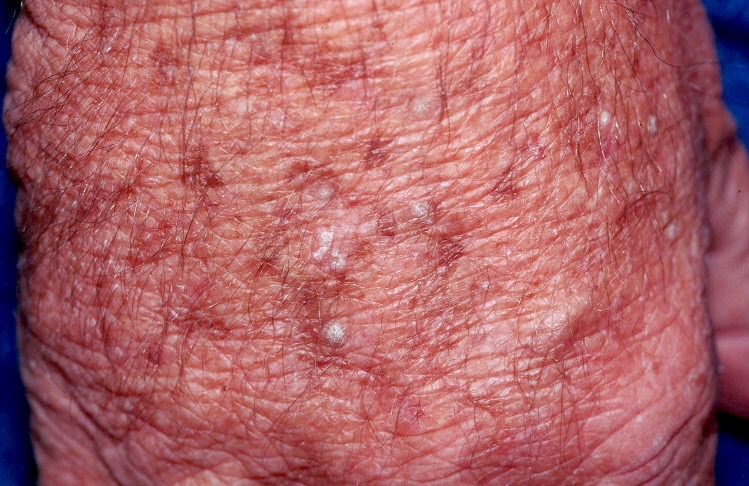
Actinic Keratoses. Several white, dry keratotic papules on the back of a sun-damaged hand. Various solar lentigos are also seen.

Actinic Keratoses. Several white, dry keratotic papules on the back of a sun-damaged hand. Various solar lentigos are also seen.
An actinic keratosis (AK) is a sun-damaged spot that has a low risk for turning into squamous cell carcinoma. The conversion rate is about 1 in 200 per lesion per year.
The AK is usually fixed in location and rough or scaly to the touch. It is often better felt than seen. The face is the most common site, but the sides of the neck, the arms, the back of the hands and the balding scalp may also be affected. An AK often hurts or stings because the sun has damaged the skin so much that the nerves are less protected and can get inflamed. However, SCC can be painful as well. The term hypertrophic actinic keratosis refers to a thicker, more raised keratotic papule compared to the typical AK.
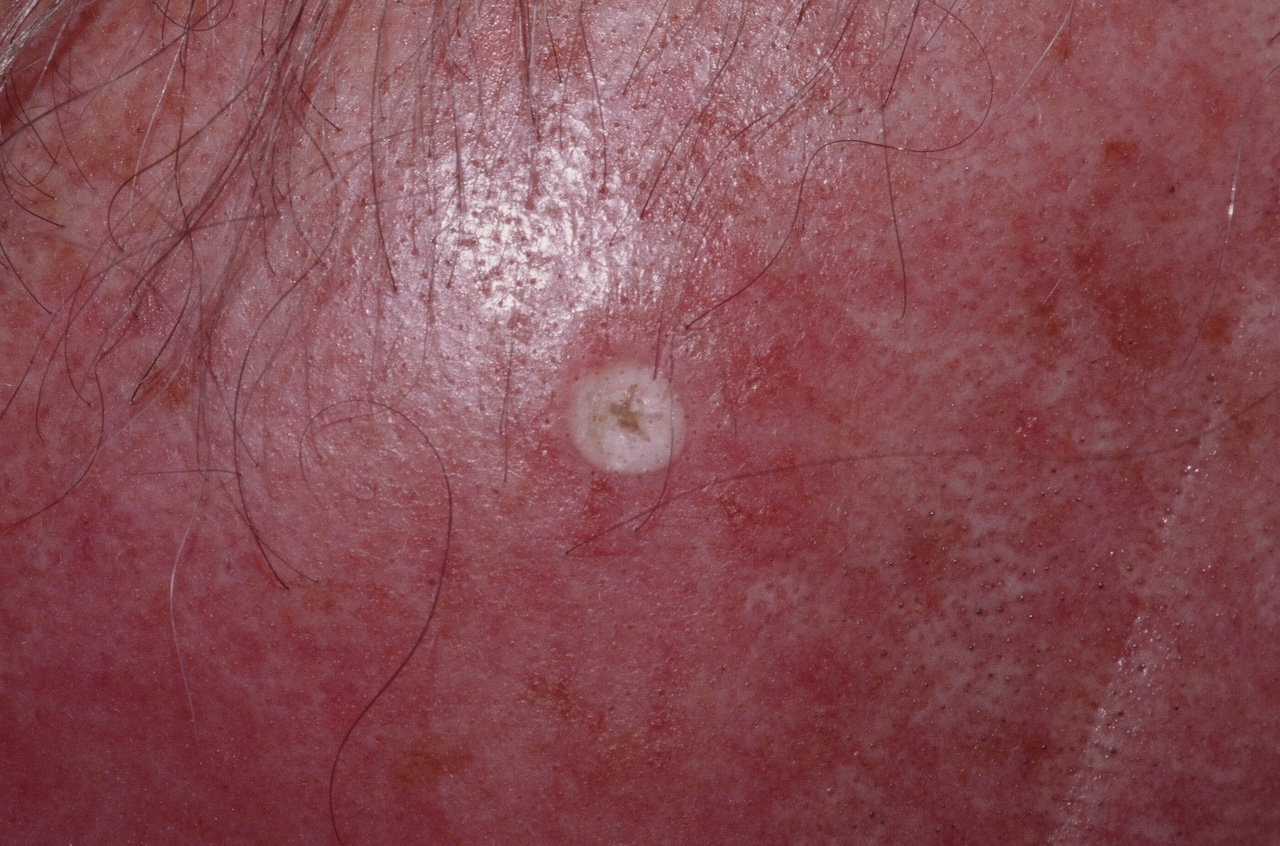
Actinic keratoses are usually better felt than seen. Freezing helps outline the extent of the lesion. This photo was taken seconds after freezing. Within 10 seconds, the white color will be gone.
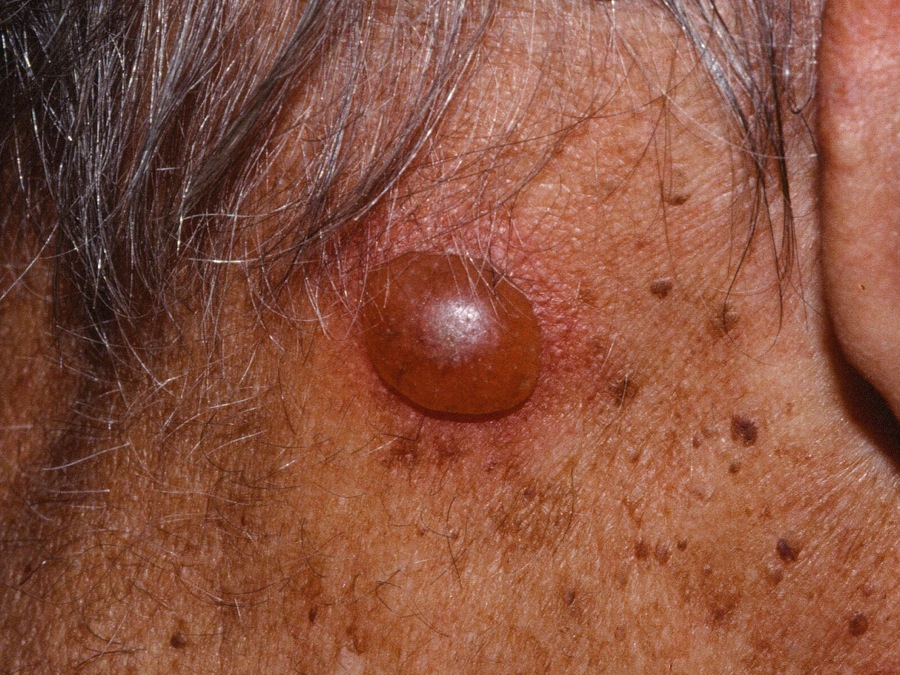
Freezing (cryotherapy) may cause a blister to form days later. This one is a much larger than typically occurs.
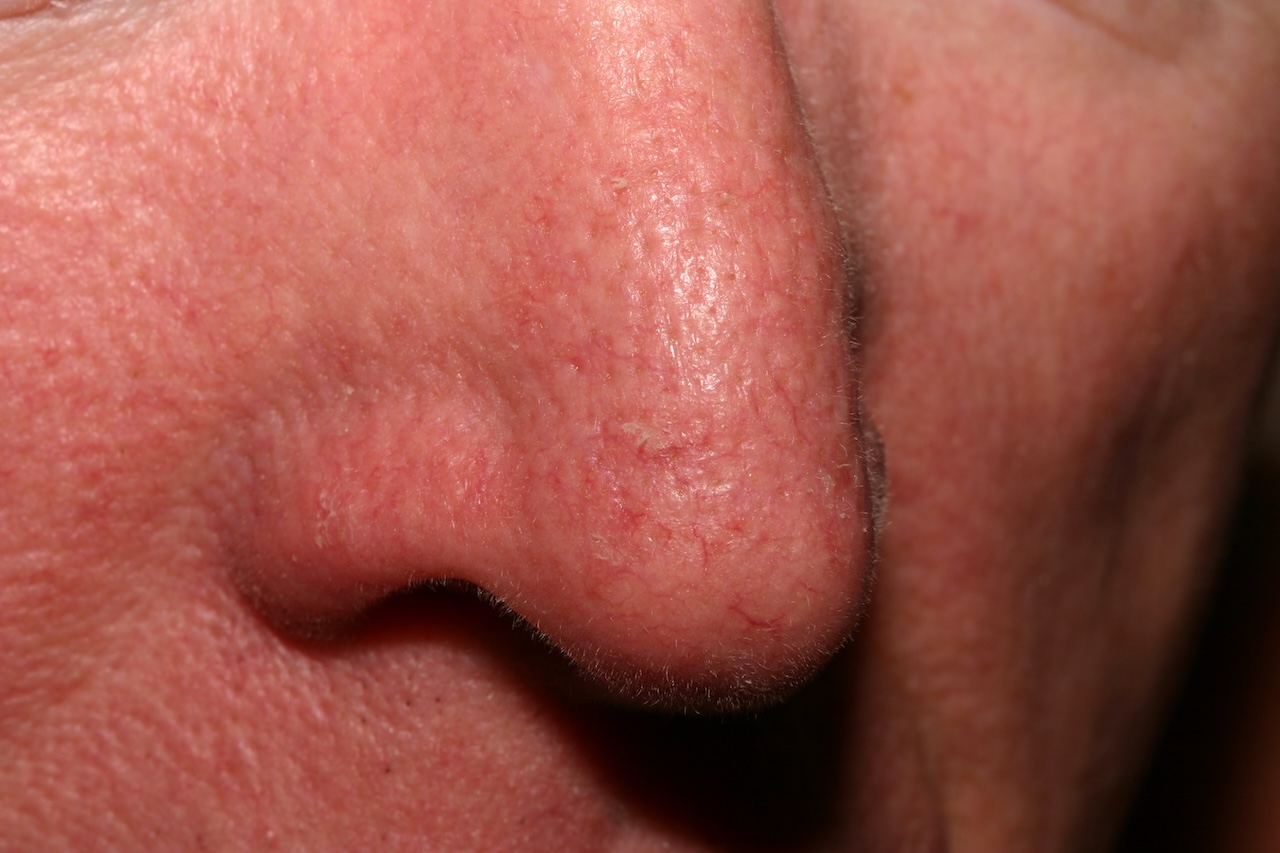
Actinic keratosis here just above and to the right of the tip of the nose. Any chronically sun-exposed area may be affected.
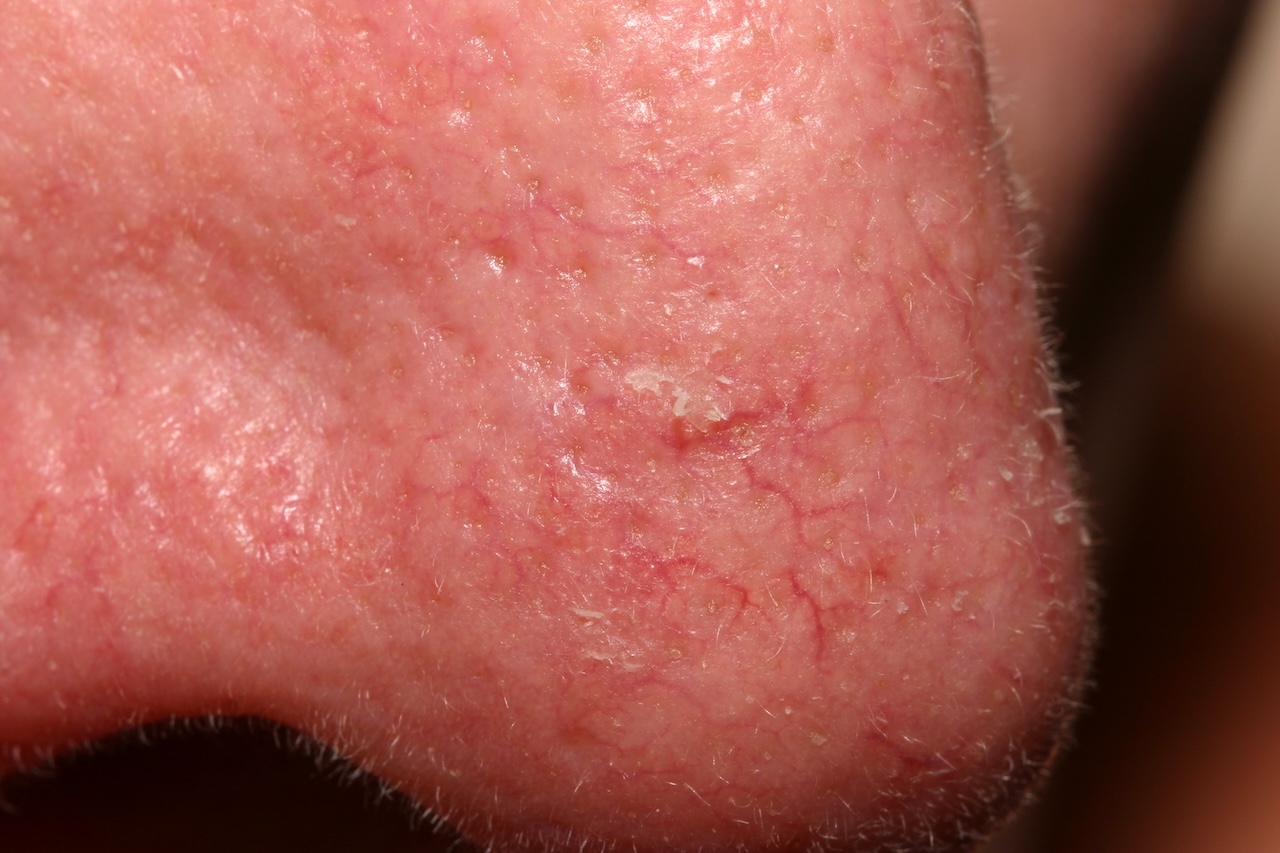
Close up view of an AK on the nose.

Most AKs are white, but occasionally they contain pigment as shown here. Then the term spreading pigmented actinic keratosis or SPAK is used. The usual treatment approaches still apply.
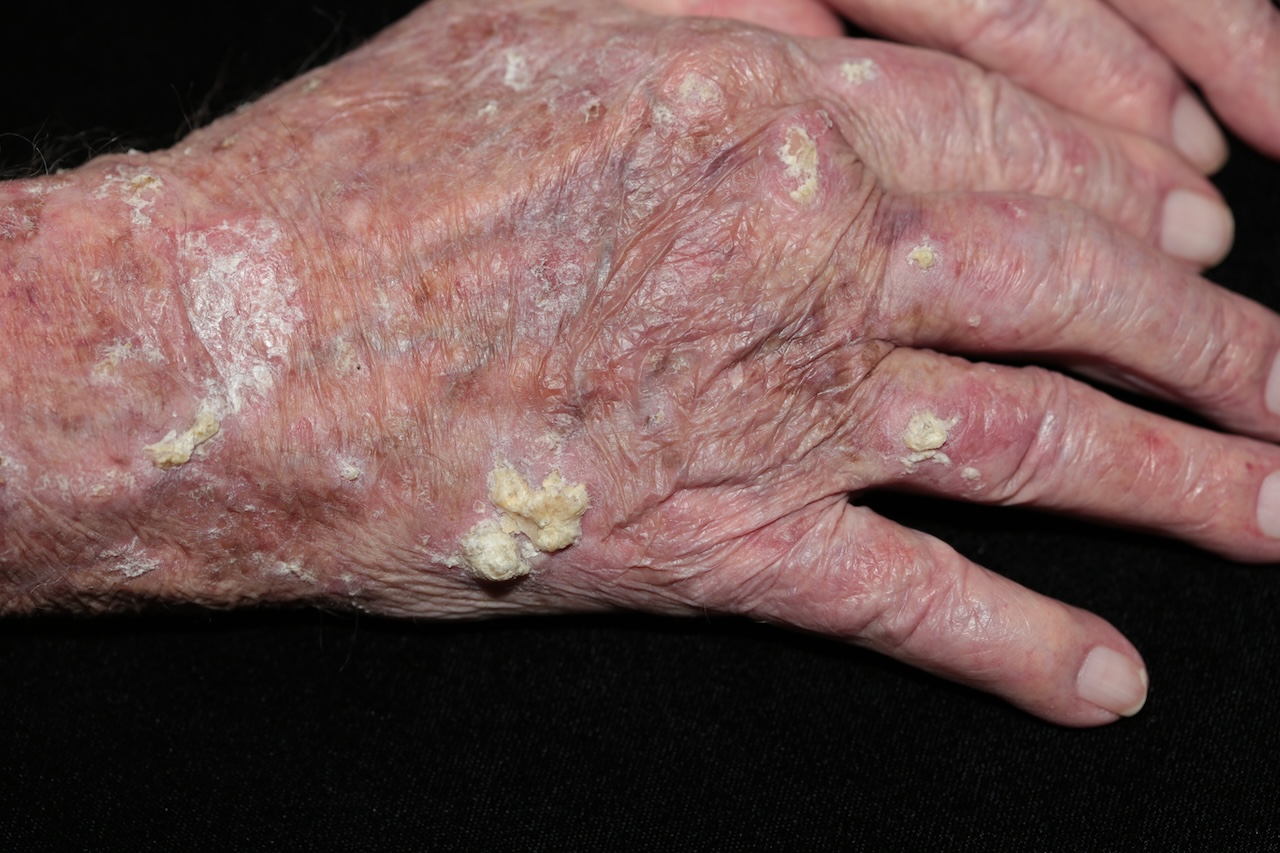
Severe sun damage, multiple hypertrophic actinic keratoses and possibly some underlying SCCs on the dorsal hands.
Who is Dr. White? | Privacy Policy | FAQs | Use of Images | Contact Dr. White